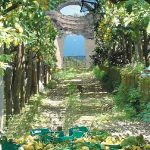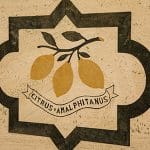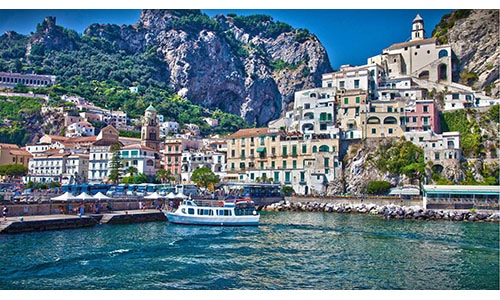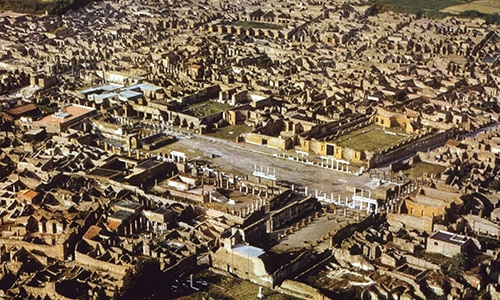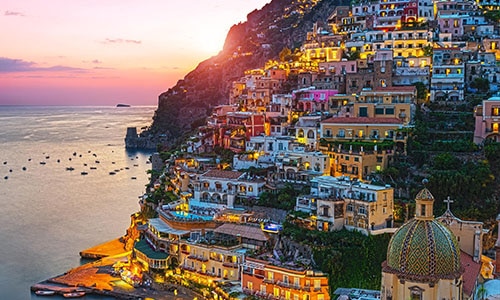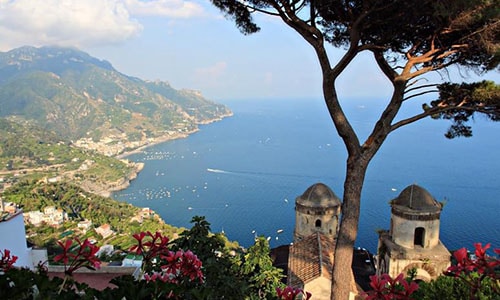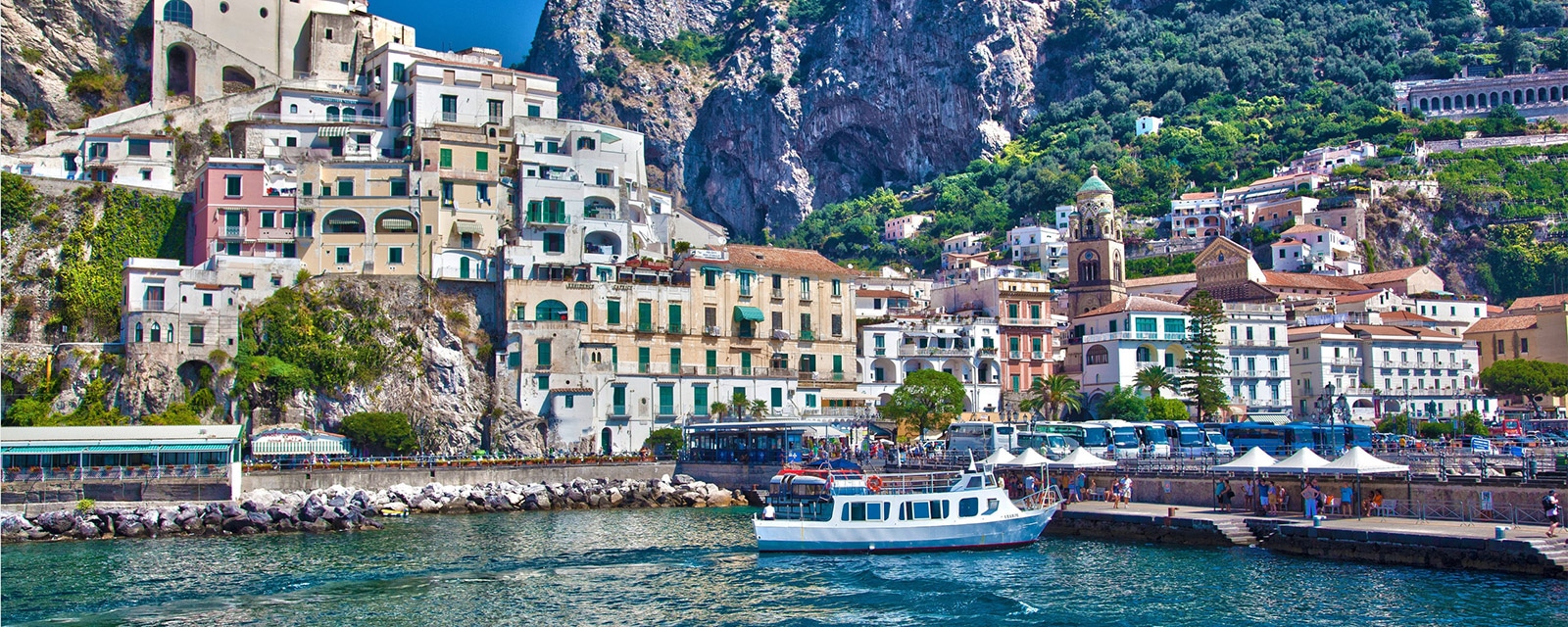
AMALFI
“The Day of Judgement, for those Amalfitans that go to heaven, will be a day like any other.”
So reads a plaque located beneath the arch that from the square of Amalfi leads to the shore. Even about the origins of Amalfi, as well as for all the other locations, myth and reality are mixed. The classic historiography with the Chronicon Amalphitanum wants it arose from a sunken ship on which some Roman patricians were directed to Constantinople in 337 AD. Overwhelmed by a shipwreck, they were able to save themselves on the Apulian coast and, after founding Melphi (today Melfi), they pushed right to the shores of what became, together with Pisa, Genoa, and Venice, on of the major naval powers of Italy. The apex of its glory comes around the 1000 AD, when Amalfi excelled in the construction of ships, while other peoples lived a very difficult period. Amalfi got to have an exceptional fleet of galleys equipped with a paddle number that could get to 116. The ships’ construction took place in the Arsenal of the Republic, located near the Flavio Gioia Square – now one of the main monuments of the town. It was through this activity that the people from Amalfi dominated the Mediterranean, moving up to the East to export timber from the wooded mountains of the Amalfi Coast, importing silks, spices, balms, perfumes, carpets and precious stones. The famous “Amalfi Tables”, elaborated here, represented, since then and for centuries, something of a maritime and a commercial code to which they performed all the sailors of the Mediterranean. But Amalfi reached a notable importance thanks to another production, that of paper. Exceptional “paper mills” were born, still commendable today, and they used very innovative techniques to create a very rare and valuable variety of paper.
The Maritime Republic was home not only for the Amalfitans but also for many foreign mostly Arab merchants, whose influence on the Amalfi territory is greatly visible, especially from the artistic point of view. If you take a look at to the Cathedral of St. Andrew you will understand why it is considered the most Arab-Norman style monument.
Amalfi, as well as Positano, was initially unknown. Giovanni Boccaccio in the fourteenth century was one of the first to notice it, but for a larger number of visitors, Amalfi was noticed in the early nineteenth century when Ferdinand II of Bourbon king of Naples built the panoramic road that leads from Vietri Sul Mare to Positano.
The two squares that are today full of souvenir shops in the twenties of the twentieth century were the backdrop to a single, vast fish market, the result of one of the two main activities of the place at that time. The other was the production of pasta. The beach was in fact occupied by the spreader set up by the pasta factories for drying it. It has been, over the years, the destination of famous people: from the Norwegian author Henrik Ibsen to Benito Mussolini and the Nobel Prize Salvatore Quasimodo. Today, it has become, like the whole coast, a popular destination thanks to its landscapes, for its historical and artistic wealth, for its culinary traditions. Just enter the charming and mysterious alleys behind the cathedral to catch all its magic.
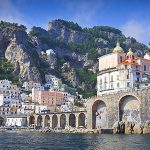
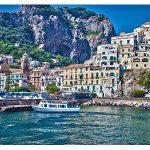
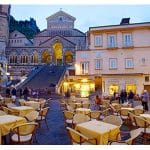
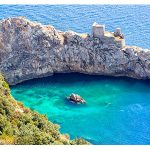
DON'T MISS
The St. Andrew’s Cathedral, a great architectural complex in Arab-Norman style, consists of two basilicas: the one the ninth-century crucifix one and the ancient cathedral of the eleventh century, accessed through a bronze door forged in Constantinople, still present.
The Cloister of Paradise, in the same complex: four interlaced arches in Arab-Norman style, so named because it was designed as a sort of cemetery.
The thirteenth century Campanile, next to the Cathedral.
The crypt of the cathedral, the seventeenth-century work in which the remains of St. Andrew are housed, transported from Constantinople in 1208.
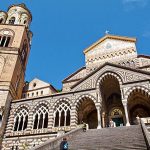
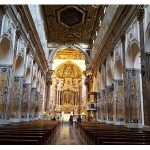

Museum of the Compass and the Duchy of Amalfi
The museum documents and presents the history of the ancient Maritime Republic of Amalfi. It proposes a series of testimonies about the evolution of nautical guidance tools including the compass that, according to tradition, was invented by the Amalfitan Flavio Gioia in 1302. According to reliable sources, it was invented in the East and Amalfi was the first in the Mediterranean to use it. The first to use a compass was Giovanni Gioia, mistakenly transcribed as Flavio Gioia, which is dedicated the square in front of the beach. The museum also houses the Tabula de Amalpha, the first navigation code of the Mediterranean, the Tarì, the ancient Amalfitan currency, as well as a series of miniatures, sculptures, and portraits of the characters that will make you relive the history of Amalfi.
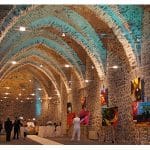
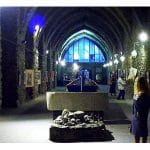
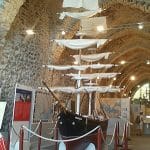
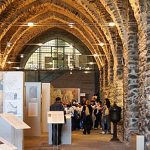
The Walloon Ironwork
Unique natural reserve of its kind, it drives along six kilometres traversed by forests of ferns and steams. Its name comes from the presence of ruins of ancient Medieval ironwork. Also, known as the Valley of the Mills for the presence of mills activated by the Canneto river waters that were used for the production of paper.
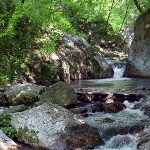
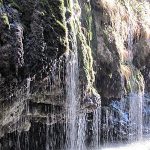
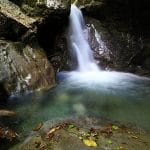
The Museum
A former paper mill of the thirteenth century converted into a museum in 1969. It houses the machinery and the equipment employed to produce the paper by hand. You’ll find that the people of Amalfi also distinguished themselves in this field by using original techniques. The paper wasn’t produced with trees’ bark and cellulose, but with the “Bambagia”, starting from pieces of linen cloth and white cotton. The mills melted then these fabrics, which were transformed into sheets of special frames. You will also find an exhibition of photographs and documents, as well as a library with over 3000 books on the origins of paper.
The tour will let you watch live the realization of an Amalfitan paper sheet and the paper mill Armatruda still produces sheets, envelopes and cards, according to tradition, to purchase.

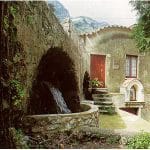
The Amalfitan Sfusato
In the Valley of Mill, you can notice the immense lemon orchards, terraces that are home to the cultivation of the famous Amalfitan Sfusato, which has now become an IGP product.
Thanks to the local tour companies you will have the opportunity to visit the Museum of Rural Arts and Crafts, a historical collection of objects, paintings, photos and memorabilia that evoke all the professional arts performed by craftsmen and farmers of the Amalfi Coast. Since also the taste wants its part, you can fortify yourself with a nice cold lemonade or with the many culinary variations of this fruit, from cookies to cakes to salads, to the limoncello liqueur renowned throughout the area. Or you may take cooking classes and learn traditional local recipes in which this citrus fruit is king.

